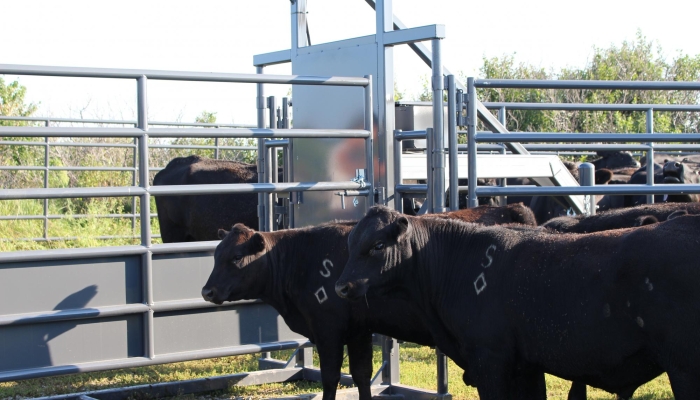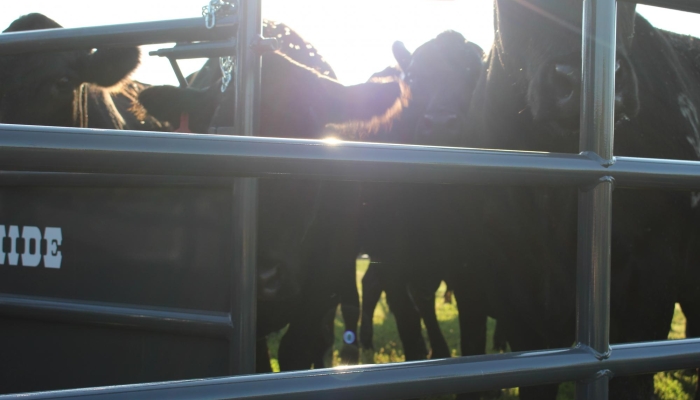Cattle Producers Event to Offer Demo and Dinner
All local cattle producers are invited to attend a free informational event on Thursday, January 23, from 4-6 p.m. The event will offer a demonstration of the Rawhide Portable Corral equipment recently purchased by the Rainwater Basin Joint Venture for use by producers in the Upper Big Blue and the Little Blue Natural Resources Districts. Dinner at Chances R’ will follow, with presentations from Pete Mcclymont, executive vice president of the Nebraska Cattlemen’s Association; Kim Siebert, past president of the York-Hamilton County Cattlemen’s Association; and Andy Bishop, coordinator for the Rainwater Basin Joint Venture.
The portable corral is one of three purchased by the Rainwater Basin Joint Venture through a grant from the Nebraska Environmental Trust for the use of cattle producers grazing wetlands in central Nebraska. The equipment makes it easier for producers to load cattle into and out of wetland areas and is provided for free use through the NRDs as an incentive for grazing wetlands.
“This event will be a great opportunity for producers to come out and learn more about the equipment and opportunities that are available to them,” said Bishop. “We have had a lot of interest in the equipment and we want to answer everyone’s questions as well as show producers how easy it is to add wetland grazing into their cattle feeding operation.”
Access to the new portable corral is a potential cost savings for local cattle producers, notes Bishop. “Many of them have pasture in the Sandhills or the Flint Hills, so they are shipping the cattle for grazing. Having wetlands to graze is great because it keeps animals closer to home…Having easier access to the wetlands with this equipment helps them diversify their operation without significant additional work.” In addition to the portable corral, the Rainwater Basin Joint Venture also offers 85 percent cost-share funds for perimeter fence, livestock wells, and cross fence--the infrastructure to make grazing wetlands and associated grasslands effectively fit into a producers’ operation without a lot of out-of-pocket expense.
Kim Siebert, owner of S Diamond Angus in Henderson, has used the portable corral and will speak at the event about his experiences. Siebert runs a herd of about 150 cow-calf pairs annually and grazes them rotationally in local wetlands managed by Nebraska Game and Parks. Grazing in wetlands and river bottoms has been part of Siebert’s operation for 20 years.
Nebraska wetlands such as the Rainwater Basin provide essential water filtration and aquifer recharge. They are also habitat for hundreds of species, including some that are at risk, such as whooping cranes, peregrine falcons and bald eagles. Unfortunately, these wetlands have been negatively impacted in the last 150 years through land development and cultivation. Incorporation of these wetlands into local farm and ranch operations through grazing maximizes habitat values in the remaining wetlands.
Grazing cattle in wetlands have a similar impact as the bison who once roamed freely across the state. Cattle can mow down many invasive species (such as reed canary grass and smooth brome), turn the earth and fertilize it, as well as spread seeds of native plants (including switchgrass and big blue stem, and native flowers). This promotes plant diversity in the wetlands and uplands providing habitat for waterfowl, pheasants and other wildlife.
“We would like to encourage more cattle producers to take advantage of this equipment, as it can benefit their businesses as well as Nebraska wetlands and the migratory bird populations that depend on them,” said Bishop. Central Nebraska provides one of the world’s greatest waterfowl migration spectacles as tens of millions of waterfowl descend on the Rainwater Basin each spring, not as a destination, but as a rest stop between southern wintering areas and northern nesting grounds. Bishop sees use of cattle grazing in the Rainwater Basin as a natural way to manage the ecosystem. “Heavy grazing at the right time means more diverse plant communities in these wetlands,” said Bishop. “By using grazing, we don’t have to use chemical treatments and other mechanical methods to manage the area…..We directly impact the population sustainability of millions of migratory waterfowl by maintaining these wetlands.”
The informational event on January 23 will begin at 4 p.m. at the Upper Big Blue NRD office (319 E 25th St, York) with a demonstration of the corral equipment. Afterward, attendees will relocate to the Chances R’ Beer Garden (124 W 5th St, York) to hear from speakers and enjoy dinner. To register for the event, please call the Upper Big Blue NRD at (402) 362-6601 or register online.


